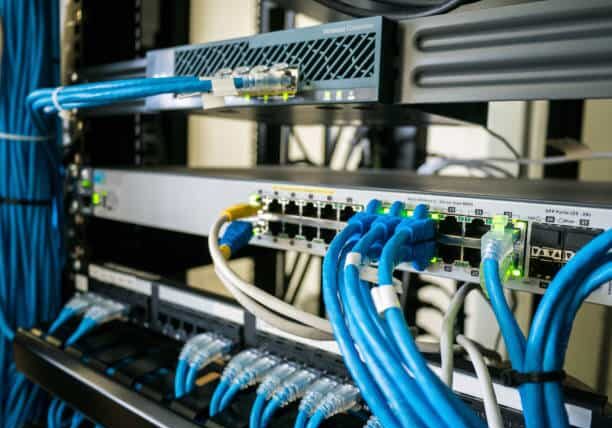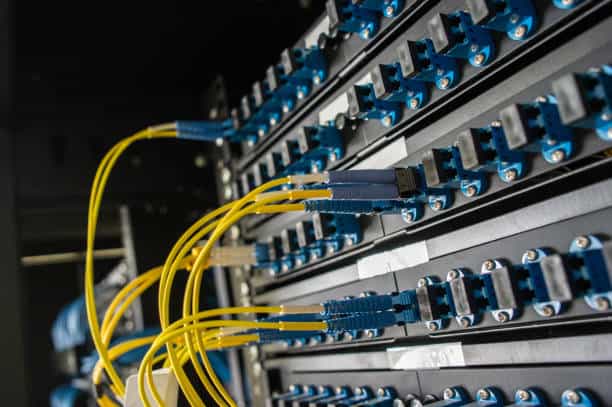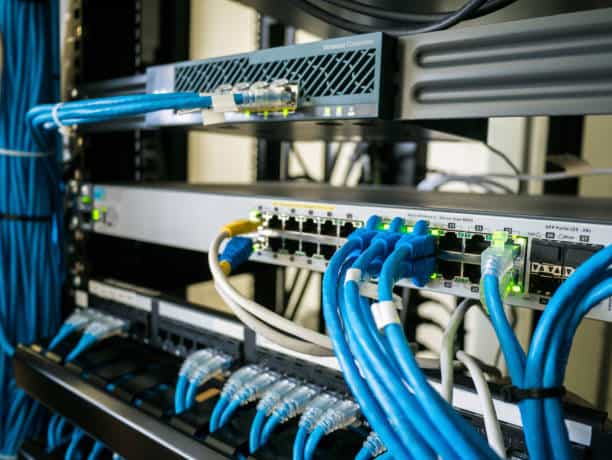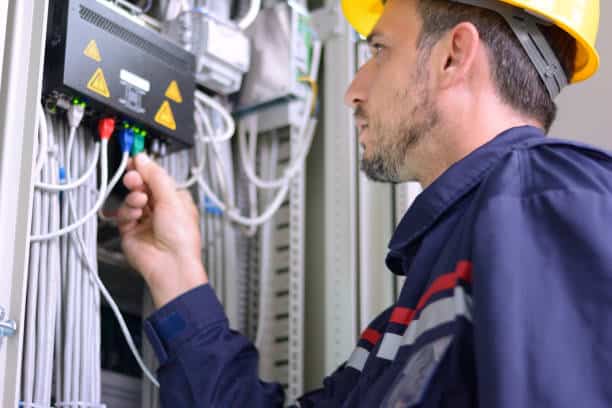What is Structured Cabling: A Guide to Understanding the Basics

If you have ever been asked to explain what structured cabling is but felt like you weren’t quite up to the task, you’re in the right place. Today, we will examine the fundamentals of structured cabling and provide a comprehensive understanding of its nature, components, and operation.
What is Structured Cabling?
Put simply, it is a standardized cabling system used primarily in corporate and educational networks. Structured cabling enables the hardware to quickly and easily set up a reliable data network infrastructure, thus allowing users to access information from any point on the network.
It was initially designed to provide a reliable and easy way of networking LANs (Local Area Networks), and it uses communication protocol standards such as Ethernet, Token Ring, FDDI, and ATM to transmit data over copper cables.
The Benefits of Structured Cabling

It simplifies the complexity of managing multiple systems.
With data, voice, and electrical networks all structured together, it simplifies the complexity of managing multiple systems. This makes troubleshooting issues easier and improves overall network performance because of its organized structure. Also, the ability to pre-test cables and components in a structured environment ensures that any new equipment is set up correctly.
It provides scalability to any organization.
This enables them to expand their network capacity without having to run additional connections or rewire the entire system.
Additionally, the simplicity of using patch panels makes reconfiguring existing connections hassle-free. This reduces time and money spent on installation costs as well as allows organizations to modify their setup quickly to make updates quicker and more efficient.
It minimizes electromagnetic interference.
Data cabling minimizes electromagnetic interference (EMI) from other devices on the network, which can lead to problems with data communication. By ensuring that shielding cables are installed correctly, businesses can ensure safe data transmission free from any RF interference. Finally, structured cabling systems are much easier to maintain due to their organized framework and a greater level of flexibility when dealing with short-distance wiring installations.
Primary Components of a Structured Cabling System

The primary components of a structured cabling system are the following:
Physical Cabling
This is the actual wiring used to interconnect computers, servers, and other network devices. It includes unshielded twisted pair (UTP) cables, fiber optic cables, coaxial cables, Cat 5/6 wiring, and patch panels that distribute signals from one cable segment to another.
Cable Management
This refers to any system for organizing and routing cables through conduits or bundles. It helps keep wires safe from accidentally being damaged or disconnected. Properly installed cable management also makes troubleshooting a lot easier. This includes labels for quick identification of connections between components and cable racks which can be used to route the wires around without having to constantly untangle them.
Networking Hardware
This consists of networking switches, routers, hubs, and bridges that act as the core connection points for all network devices in the system. The main purpose of these hardware components is to enable communication between different network nodes (i.e., computers connected to the local area network).
Testing Equipment
This includes various types of specialized testing equipment designed for measuring the performance of structured cabling systems. Tests such as insertion loss tests, attenuation tests, crosstalk tests, impedance measurements, and length measurements all help ensure the proper installation of cabling networks and their overall performance over time.
Having a thorough understanding of the different components required for a structured cabling system allows organizations to ensure they have the necessary hardware in place that best meets their needs.
Types of Structured Cabling
The type of cabling used can vary from setting to setting depending on the specific requirements of that environment.
- Copper cabling has been around for centuries and is the most cost-effective way to transmit data over short distances. It’s able to send large quantities of data quickly and reliably even over long distances, but data rates will decrease as the distance increases. This type of cabling requires more maintenance than fiber or wireless, and its maximum transmission distance is limited to 100 meters.
- Fiber optic which uses strands of glass fibers to transmit data as pulses of light. This form of cabling has the advantage of transmitting at significantly greater distances than copper without signal degradation. However, it is difficult to install and requires specialized equipment to connect each endpoint. In addition, it can be pricey, making it a less appealing option in comparison to copper for certain applications.
Finally, there’s a wireless technology that allows data to be transmitted through the airwaves instead of using physical cables. While this makes installation and maintenance much simpler, its use can be restricted by environmental factors such as signal strength, interference from other objects or signals, and line-of-sight propagation issues.
Additionally, wireless isn’t suitable for applications that require high levels of security since it’s relatively easy to break into indoor networks due to their inherent limitations.
We Provide the Best Structured Cabling Solutions for Your Business

We are proud to be one of the leading low-voltage cabling companies in Apopka, FL, and its surrounding areas. We will deliver your project on time and within budget with the assistance of our highly qualified and devoted engineers.
For your structured data cabling needs, contact us today at (407) 654-2400 for a quote!
Frequently Asked Questions
How does structured cabling benefit businesses?
Structured cabling can benefit businesses in many ways. By having a structured cabling system, businesses can ensure their networks are properly designed and maintained for maximum performance and reliability. Structured cabling improves the ability to troubleshoot issues quickly because all of the cables and connections are organized in an efficient way. It also increases uptime by reducing the time spent on network maintenance. Furthermore, structured cabling typically saves businesses money over the long term as it is more cost effective than traditional cabling systems, which require frequent replacement and upgrades. Additionally, structured cabling helps sustain the current IT infrastructure since all components are compatible with each other, and making networking changes is easier and faster compared to traditional designs.
Is structured cabling compatible with all types of network infrastructure?
Yes, structured cabling is compatible with all types of network infrastructure. Structured cabling is a method that allows for the seamless integration of various hardware and software components in different network infrastructures. It creates uniformity in how the cables are laid out and connected, while also creating flexibility for changes in technology down the line. This means that even if the hardware or software used within the network is switched over time, those changes can be enacted without needing to modify the cabling infrastructure itself. As long as standards are met and maintained, structured cabling should work with any type of network infrastructure.
More Articles
Office Security Cameras: Indoor & Outdoor Surveillance
Installing office security cameras is a great measure to protect you, your staff, and any inventory you have on-site. You can place them both internally and externally for better surveillance over what’s happening at your business property. When installed, security cameras offer a preventative measure to deter criminals from targeting your property. They are also…
Read More »
